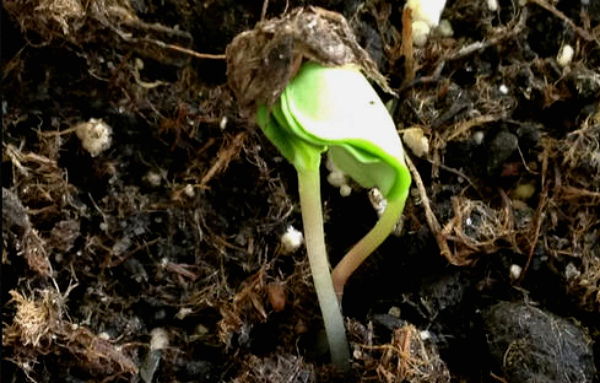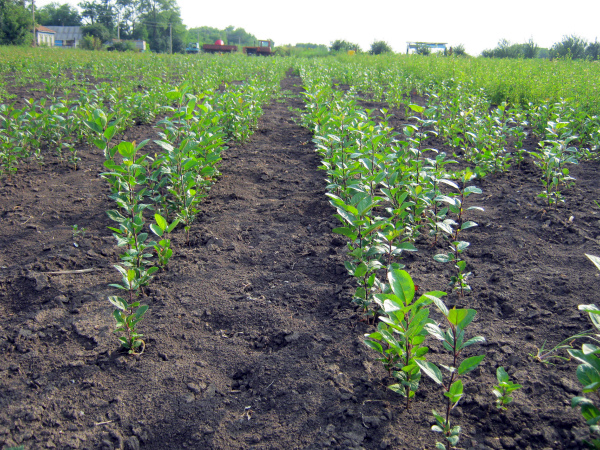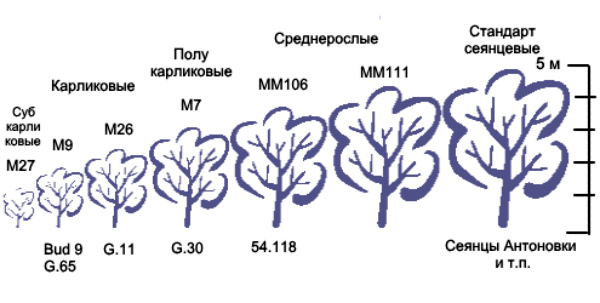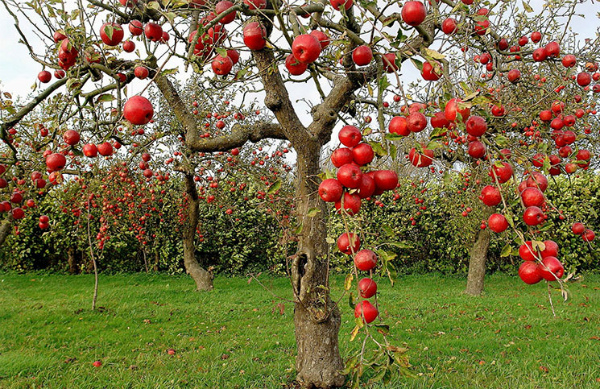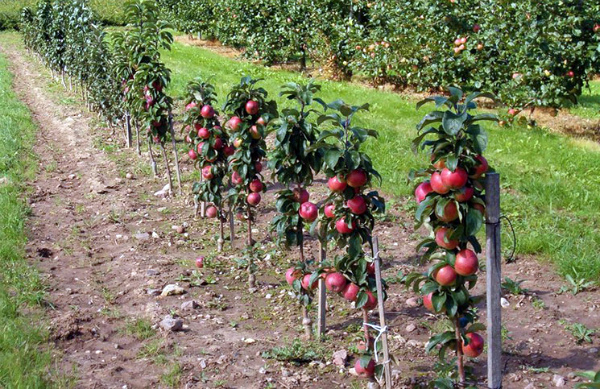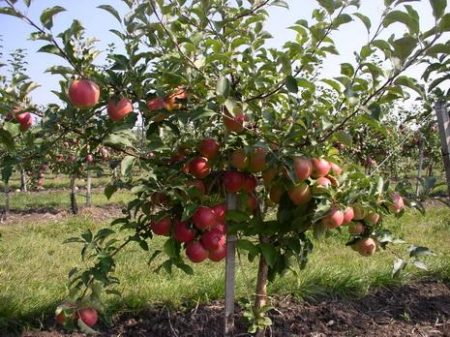How to grow a strong apple stock
The stock is one of the parts of a tree that affects vegetative processes, fruiting, resistance to external influences. Often, this is a root system or a plant to which a cutting or bud of another plant is grafted. Distinguish between seed and clonal rootstocks, as well as semi-dwarf and dwarf.
Content
Seed stock
The seed stock is a vigorous sprout that is grown from the seeds of wild apple trees (less often) and the Antonovka variety (often). This stock is compatible with absolutely all varieties of apple trees. The main goal for which grafting is carried out is to get a vigorous tree with strong roots. Trees with seed stock grow to a height of 7 meters if not pruned. The life cycle of an apple tree is also significantly extended up to 70 years, while every year the tree gives a stable harvest and increases its own immunity to diseases and resistance to weather changes. However, this grafting postpones the first fruiting until the 7-8 year of the tree's life.
In addition, due to the height of the tree, it is quite problematic to care for it, in addition, the gap between the trees should be at least 5 meters. And this greatly complicates the placement of rootstocks in small areas.
The advantages of this way of improving the apple tree:
- The result is a strong, resilient, viable tree with a well-developed root system.
- The lifespan of one tree is greatly increased.
- Under a dense, spreading crown, you can arrange a flower bed.
- Surprisingly high yields per tree.
However, one should not overlook the disadvantages that seed grafting entails:
- The tree grows very tall, which makes it difficult to care for the upper part of the crown.
- Late fruiting compared to non-grafted apple trees.
- The need for space for planting several grafted trees.
Clonal rootstock
A clone stock is a specially bred apple tree variety that propagates through cuttings, cuttings and roots. At the same time, they are not grafted to other plants, but grafting is carried out to them.
The only drawback is that rootstock plants do not have very tasty fruits. However, they are grown because they have the same set of genes, which allows them to keep their characteristics stable.
One of the features of such a rootstock is that the trees are undersized. So if you need a dwarf zoned species with high compatibility with other varieties, then this method is perfect for you.
What other benefits can be achieved if such a rootstock is grafted? Apple trees enter the fruiting period much earlier, there is a positive dynamics of increasing yields every year. It should be noted that grafting allows you to get edible fruits already in the 4th year of cultivation, which have all the necessary commercial qualities.
Among the nuances of cultivation, the breaking off of flowers and ovaries is noted in the first years of scion growth, so as not to deplete the tree.The main advantage over seed stock and conventional trees is that trees can be placed in small areas, while maintaining the maximum planting density.
Among the varieties of rootstocks, 54 118 are distinguished, which filled most of the gardens in the middle lane. Reproduction takes place in film greenhouses and greenhouses, using cuttings. The stock 54 118 is characterized by dark bark, dark green leaves, high resistance to frost and low temperatures in principle. There are up to 5 layers per one mother plant. Another positive aspect of growing 54 118 is that the trees do not require support. Semi-dwarf rootstock 54 118 was obtained from Budagovsky's paradise and rootstock 13-14.
Why clone cuttings should be grafted:
- Due to the columnar structure of the tree, it grows short.
- Groundwater can be 1-1.5 meters underground.
- Dense planting of trees.
- Large fruits with high commercial qualities.
Among the disadvantages, it should be noted:
- Shallow roots, which increases the risk of freezing.
- The need to tie up trees so that they are not damaged by strong winds.
- The average life span of a tree is 15-17 years.
- The need to maintain soil looseness.
Stock care
After the inoculation has passed, the rootstock must be carefully cared for. It is imperative to water the tree in order to saturate the roots with the amount of moisture necessary for growth. You should also carry out two dressings with a solution of ammonium nitrate or mullein infusion. It is best to place the stock in a well-lit but cool area. Before planting, in about two weeks, the stock is hardened by taking it out into the open air.
With proper care and care of the rootstock, strong seedlings are obtained already in July, which can be inoculated.
Planting a dwarf apple tree
The first step is to clarify that a dwarf rootstock is not another name for a columnar apple tree. A columnar variety is called a variety that reaches a height of 1.5-2 meters, with an erect trunk and practically no branching, but with a large number of fruit branches up to 5 centimeters long.
The dwarf apple tree has skeletal and semi-skeletal branches, but at the same time it does not grow like a regular tree, since it is genetically inherent in restraining growth. Its root system is located close to the surface of the earth, rather asymmetrical and fragile.
For growing a dwarf apple, it is better to choose a place protected from strong winds with good lighting. The soil should be loose, fertile, with good moisture. Landing takes place according to the scheme of 2x3 or 3x3 meters in a hole 70 cm deep and 60 cm wide. The bottom is filled with a mixture of soil, superphosphate, sodium chloride or wood ash, as well as humus. From above, this mixture is sprinkled with ordinary soil. After the dwarf rootstock is grafted onto a clonal base (no higher than 5 centimeters from the ground), the seedling is lowered into a pit, its roots are carefully straightened and covered with soil without fertilizers. The near-trunk circle of the earth is compacted, the seedling is tied to a support and watered. After, you need to mulch the hole.
You can use variety 54 as a rootstock, but in this case you will have to carefully monitor the height of the tree and regularly prune it.
Video "About clonal rootstocks and seedlings with an insert"
This video will help the novice gardener figure out what a rootstock is, and will also tell you about clonal rootstocks, about different stunted stature and how to make seedlings with a dwarf insert.

